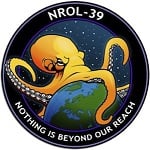For example if the Betelgeuze system had a planet, with a theoretical large telescope on that planet and looked back at earth. It would see life and civilizations from the 15th century a.d. (~500 light years distance)
I think this is plausible. The only problem is finding the inhabited planet to look at. But the telescope itself is kind of already in the heads of people. We would send one or probably several spacecraft into the far reaches of our solar system and use the sun as a massive gravitational lense.
It would just take ages to get a new target into focus.
Alternatively, they could get useful resolution if they had a telescope the size of the solar system, something that’s doable with interferometry.
*Watching 17th century* “oh man, this July season of France is going to be epic!”
A while ago a coworker and I had an idea for a sci-fi novel that was similar in idea to this.
Essentially humanity sent out these probes that were in effect giant mirrors (pointed at Earth) that reflected light information back to us. The further out they go, the further back in time we get images/video of. We never went anywhere with it, but I thought it would have been neat to explore what happens to immediate political tensions since hard evidence of more recent events, never seen before, would return to Earth first before we even found out the origin of our species.
2 questions:
-
How would the probes travel faster than the light information from way back when?
-
How high were you when you guys came up with this idea?
-
Who knows! It wasn’t going to be hard sci-fi necessarily, but more food for thought. Not everything in sci-fi has proven scientific stuff behind it. They travel faster than light in Star Trek and Star Wars…
-
We weren’t, and that’s probably why we didn’t question the idea too much 😅
-
-
I just spent ten minutes on Google trying and failing to find it, but there’s a novel that uses that basic premise. Humans find this network of observation satellites and are able to tap into the feed and basically watch earth from the 1300’s on. The builders are long since gone. Most of the novel is the crew trying to catch up to this museum ship that the network is uploading to.
Was a really good one if anyone knows the name of it.
Edit I found it!
If you do find the name, could you post it here please? It sounds like it could be good :)
Awesome, thank you :)
You mention “the builders”, and that brought me to this series. Ring a bell?
I found it!! By Jack McDevitt
Awesome! Thanks for that, always adding new sci-fi to my library
Oh snap! That does sound eerily similar. Probably written before we had our idea, and I’m sure it is far more well written than what I could have done.
I’ll keep my eyes open for it!
What do you mean if? We’ve been doing that for years, and so far as I understand it, the only reason that we haven’t found any is that there are millions of solar systems to check.
But we can’t see planet surfaces yet. The most we have achieved is seeing a dark smudge in front of a light smudge.
Most planets are detected either by the star wobbling a little due to the planet pulling on it through gravity. Think a light smudge going a pixel to the left and then a pixel to the right.
Or by detecting a star getting slightly darker when a planet passes in front of it. This lets us guess the composition of the atmosphere when we filter the star light through a prisma and analyse which wavelengths of light we have a smidgen less of.
It’s amazing what we can do. But we’re still a far way away from actually seeing extrasolar planets.
OP’s criteria is for an equal (equivalent) alien civilization.
If they were to have what we have, they would be able to detect (infer) atmospheric composition filled with the byproducts of industrialization. It’s not ideal, but IMO we’re halfway there. I can’t recall the system’s designation, but there was some hubbub about one where the Sun’s light was interrupted by some huge mass which seemed to not follow an irregular (hypothetically artificial and intelligently controlled) orbit. I can’t wait for the tech to improve, this is exciting stuff.
We’ve actually gotten relatively clear pictures of exoplanets fairly recently. They’re still blobs, but now they have color!
For tis topic I love the discussion of Rational Animations. Here is one of the videos of the topic:
Humanity was born way ahead of its time. The reason is grabby aliens.
This is something I sometimes wonder myself. Like, we always assume aliens would be more advanced than us… But what if the opposite was true? Aliens exist, but humanity is actually the most technologically advanced species in the universe?
There’s a short story that kind of touches on this, and I’m pretty sure it’s pretty readily findable online. “The Road not Taken” by Harry Turtledove
Spoilers, I guess
The basic premise is that the secret to FTL travel is ridiculously simple,and most civilizations stumble onto it fairly early, and it just happened that humanity never did. Every other civilization once they discover it tends to pour all of their resources into developing that technology, but because of that they don’t really advance in other aspects, so aliens arrive on earth expecting to face a primitive civilization because they didn’t detect any signs of FTL travel, but it turns out that we far surpass them in every other aspect. They attempt to invade earth with basically flintlock muskets, and are met with tanks and fighter jets and such.
Then they would see the Earth at whatever detail was possible for them and nothing would be any different. Looking at another planet is like taking pictures of remote areas of our planet with satellites orbiting Earth, the animals and planets being phographed are inlmpacted in no way.
If you are asking about how it would affect the alien species to know people exist it would be necessary to understand their culture and biology first.
You’re free to imagine whatever the hell you want.
Well…we know for fact that other planets exist with life. We don’t know WHAT life. It might be a bunch of animals that are similiar to cows or birds. But we know the planets exist, and they have living vegitation on the planet, which would indicate other life.
We just don’t know what.
Sorry to be the “um, actually” guy, but life on any planet other than Earth has not been confirmed. There have been some signs that there MAY be life elsewhere, but nothing conclusive.
As a layperson, there seems to be a general consensus that, given the vast nature of the universe, life on other planets may be likely. We just can’t say “for a fact that other planets exist with life”.
I’ll be happy to be proven wrong if you’ve got a source.
I just remember reading about it every few years. They’ve found several earth like planets. One I read about in 2014 said it was so similiar to earth that they unofficially nicknamed it “Earth 2”. They found another earth like planet that same month, but it’s size was so different that they made the joke it couldn’t be Earth 3, but based on size it might be Earth 5 (with the joke being the planet was like 2 earths combined).
But our technology was good enough to see the planet is green and blue, indicating life. But our technology wasn’t good enough to zoom in to see what that life looks like. But we know it’s out there.
Earth like just means it’s the right size, in the right spot away from a star (in what’s known as the habitation zone) that it could maybe possibly support the life we know about here on Earth. It does not mean it is actually like Earth.
All we can really “see” about them other than their position, is the elemental makeup by looking at the wavelengths of light bouncing off it and that can tell us things like that it might have a nitrogen-oxygen rich atmosphere. But we don’t know if there are plants or animals or any kind.










